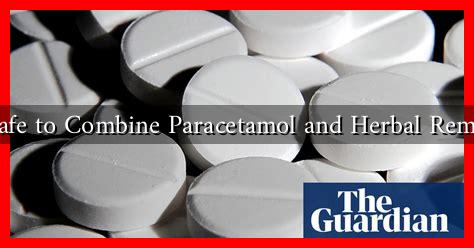-
Table of Contents
Is it Safe to Combine Paracetamol and Herbal Remedies?
As the popularity of herbal remedies continues to rise, many individuals are exploring the potential benefits of combining these natural treatments with conventional medications like paracetamol. However, the safety and efficacy of such combinations remain a topic of debate among healthcare professionals. This article delves into the implications of mixing paracetamol with herbal remedies, examining potential interactions, benefits, and risks.
Understanding Paracetamol
Paracetamol, also known as acetaminophen, is a widely used over-the-counter medication for pain relief and fever reduction. It is generally considered safe when taken as directed, but excessive use can lead to severe liver damage. According to the Centers for Disease Control and Prevention (CDC), paracetamol is one of the most common medications involved in overdose cases in the United States.
The Rise of Herbal Remedies
Herbal remedies have been used for centuries in various cultures for their therapeutic properties. With a growing interest in natural health solutions, many people are turning to herbs for pain relief, inflammation reduction, and overall wellness. Some popular herbal remedies include:
- Turmeric: Known for its anti-inflammatory properties.
- Ginger: Often used to alleviate nausea and pain.
- Willow Bark: Traditionally used for pain relief, similar to aspirin.
- Devil’s Claw: Commonly used for arthritis and muscle pain.
Potential Interactions Between Paracetamol and Herbal Remedies
While many herbal remedies are considered safe, some can interact with paracetamol, potentially leading to adverse effects. Here are a few key considerations:
- Increased Liver Toxicity: Certain herbs, such as kava and comfrey, have been linked to liver damage. When combined with paracetamol, the risk of liver toxicity may increase.
- Altered Metabolism: Some herbs can affect the liver enzymes responsible for metabolizing paracetamol, potentially leading to either increased toxicity or reduced effectiveness.
- Blood Thinning Effects: Herbs like garlic and ginkgo biloba can have blood-thinning properties, which may complicate the effects of paracetamol, especially in individuals with bleeding disorders.
Case Studies and Research Findings
Research on the interactions between paracetamol and herbal remedies is limited, but some studies provide insights into potential risks. For instance, a study published in the journal *Phytotherapy Research* found that certain herbal supplements could inhibit the enzymes that metabolize paracetamol, leading to increased levels of the drug in the bloodstream. This could heighten the risk of toxicity, particularly in individuals with pre-existing liver conditions.
Another case study highlighted a patient who experienced liver failure after combining paracetamol with a high dose of kava for anxiety relief. This incident underscores the importance of consulting healthcare professionals before mixing herbal remedies with conventional medications.
Guidelines for Safe Use
To minimize risks when considering the combination of paracetamol and herbal remedies, individuals should follow these guidelines:
- Consult a Healthcare Professional: Always discuss any herbal supplements with a doctor or pharmacist, especially if you are taking other medications.
- Monitor Dosages: Be mindful of the dosages of both paracetamol and herbal remedies to avoid exceeding safe limits.
- Research Herbal Ingredients: Understand the properties and potential interactions of the herbs you are considering.
- Be Aware of Symptoms: Watch for any unusual symptoms or side effects when combining treatments and seek medical attention if necessary.
Conclusion
While combining paracetamol with herbal remedies may offer potential benefits for some individuals, it is crucial to approach this practice with caution. The risk of adverse interactions, particularly concerning liver health, cannot be overlooked. Consulting with healthcare professionals and conducting thorough research can help ensure safe and effective use of both paracetamol and herbal remedies. Ultimately, informed decision-making is key to achieving the desired health outcomes without compromising safety.
For more information on herbal remedies and their interactions with medications, you can visit the National Center for Biotechnology Information.


